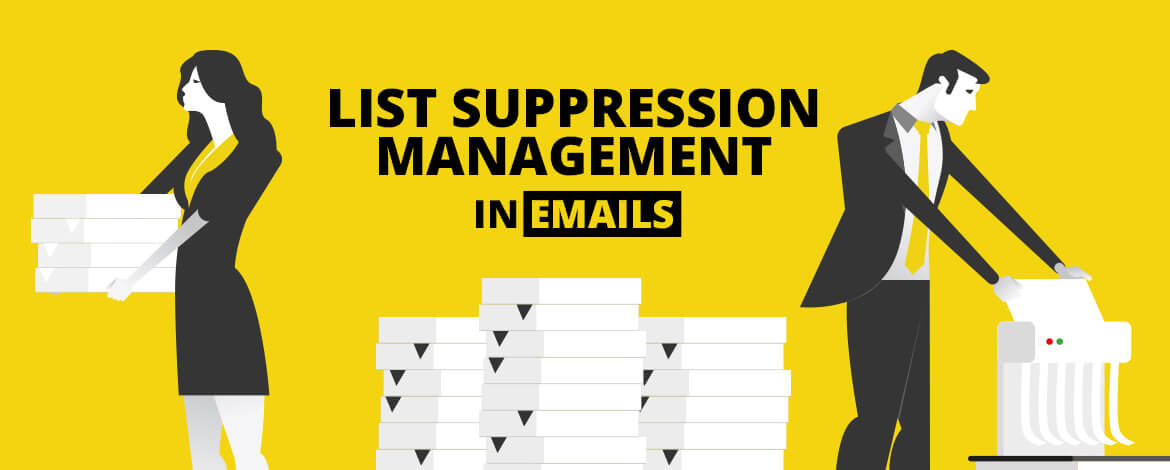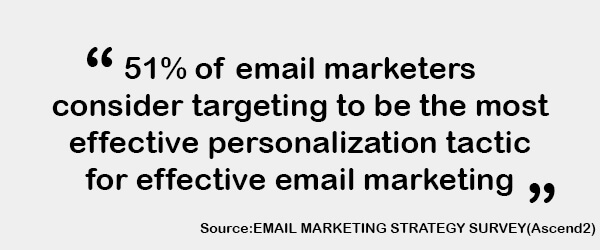Email marketers are well-versed in using audience targeting and list management strategies to optimize campaign performance. This includes following the traditions of direct marketing – where targeting the right audience with the right message, at the right time is a proven campaign strategy that drives results.
Marketers in the recent times have been harnessing advanced targeting capabilities that can deliver highly personalized content to recipients for their email marketing campaigns. This is often based on a significant amount of actionable data available about each recipient.
From simple name personalization to including content based on prior purchases, web page visits, online shopping cart activity, and other behaviors that may identify a user as ‘ready to buy,’ marketers have turned audience targeting into a science – using campaign performance analytics to demonstrate the value that targeting delivers. For custom campaigns opt for referral email templates that will be more beneficial for the success of the email campaign.
How to Drive Audience Targeting with List Management
While the focus on list management to drive audience targeting has received tremendous attention when it comes to suppression lists, utilization often begins and ends with the ubiquitous opt-out file.
If you’re going to use email as a marketing, it is indispensable to provide your recipients the preference to unsubscribe from future email messages. You can then follow this up with a period of time for processing that you must honor.
So, suppressing email addresses from users who have unsubscribed is a standard practice for email marketers, so as to recognize the importance of running compliant email programs. The suppression process for unsubscribes is often handled automatically by your email platform and marketers may relatively give it little thought beyond the understanding that their opt-out rates from one campaign to the next will change. So to some extent, suppression file management can become ‘out of sight, out of mind.’
How to Use List Suppression Management Effectively
Suppression lists can be leveraged for a wide variety of marketing activities that go far beyond compliance with CAN-SPAM and other email rules. Many creative email marketers use suppression file management as a part of their overall audience targeting process. There are any number of instances where de-targeting or negatively targeting an audience group from a larger audience list may be more efficiently handled through suppression files rather than positive targeting.
An example of this outside the email space is the way that negative keywords are used in search marketing. They can be used to actively remove certain potential recipients from being targeted in a campaign.
While there are any number of ways that suppression files can be used to optimize targeting and campaign performance, here are a few advanced suppression list strategies that different companies use today.
Suppression List Management – Current Customers
Many marketers regularly communicate with their current customer base through email. For a large percentage of businesses, recurring revenue from your loyal customer base makes for a sizeable part of their ROI. Marketing to your current customers is typically more cost-effective than acquiring new customers. This is why companies focus on customer retention and also the very reason why the customer database is often considered a business’s most valuable asset.
However, there is customer churn in every business. Some customers may cancel a subscription or never make another purchase. So, whether a company obtains acquisition lists for their own email campaigns, works with a performance email marketing agency, or engages with affiliate marketers and networks, there are numerous avenues to use email to acquire new customers cost-effectively.
Challenges of Acquisition Marketing – New Customers
One ongoing challenge for acquisition marketing is the goal of focusing efforts solely on new customers. Acquisition campaigns often include an offer that is more aggressive than those available to current customers.
Advertisers would typically prefer that current customers never see these new customer offers because they either don’t qualify for them or because the margins are lower (75% off for new customers!). More so, it is considered that current customers are more likely to make repeat purchases without resorting to massive discount offers.
This is where suppression list management in Email can play a key role. A file of all current customer emails can easily be used as a suppression file in every acquisition email campaign. This helps to ensure that acquisition campaigns are focused on prospects rather than customers. This is one of the most popular uses of suppression files to optimize campaign performance, but many companies don’t seem to take advantage of this tactic.
Benefits:
- No payments are made to affiliates for driving sales from customers as you already know.
- No loss of revenue by exposing current customers to aggressive acquisition offers.
- It’s typically one of the easiest suppression files to create and use universally.
Importance of Customer Segmentation for Suppression List Management
Email marketers will often build a list for a specific campaign, by targeting specific recipients within their house files. This works well, as long as you are easily able to identify and select the specific audience segment to be targeted. If the segmentation is straightforward (select everyone who has bought a certain product previously) it may be relatively easy to pull that target group from the larger database.
However, if the target audience is based on an action not taken (every customer who did not buy a certain project) it may be more difficult to positively target that group. Instead, it may be much simpler to just create a file of purchases and suppress that from the larger list.
Similarly, if you are using affiliate marketers in your email programs, you might have an offer for a particular product or service that they are promoting through email. Instead of suppressing your entire current customer list, perhaps you only want to suppress any previous purchasers of the specific product in the new campaign. In this case, creating a suppression file of just this customer segment would achieve the goal of having affiliates focus on consumers who haven’t previously purchased the particular product they are marketing.
Really the only limits on this type of customer segmentation are based on your business and what data you have available about your current customers.
Benefits:
- Dialing in your affiliates’ campaigns on the particular target audiences you want them to focus on.
- The ability to more easily target and market to hard to identify audience segments on your customer lists.
What about Non-Responders
Over time, retention and acquisition email campaigns are mostly found to include the same recipients in multiple campaigns. At a certain point – typically some number of contacts or a time period with no response – your analytics may tell you that it isn’t cost effective to continue mailing a recipient since they are highly unlikely to respond to further marketing. In these cases, you may want to build a list of the high volume non-responders and suppress them from future mailings – either your own internal mailings or those driven by affiliates or other outside mailers.
Removing this particular group of low value prospects may also deliver other benefits to your overall campaigns:
- Mailing to a large number of non-responsive email addresses over time can have negative impacts on overall deliverability and sender reputation with different email platforms.
- Removing these records from future mailings provides a cleaner list of more potentially responsive recipients. While email is a very cost-effective marketing channel, there are still higher costs to mail larger lists.
- The incremental cost of adding one more address to an email campaign may be completely negligible, but once that number reaches thousands, tens of thousands or more, that cost becomes more of a factor.
Benefits
- Reducing email marketing costs by removing addresses of recipients who are highly unlikely to ever respond – and generate revenue.
- Improving email campaign performance metrics like open rate, click rate, and conversion rate.
- Having a positive impact on overall deliverability and sender reputation with email platforms.
How to deal with Past Recipients
If you’re using email for acquisition campaigns, you might want to truly focus on recipients who have not been exposed to your marketing campaigns in the past. This would vary from your current customer list or something like a high volume, non-responder list, but might include records that would appear on those files, as well.
In this case, another suppression file you could create and leverage would include every email address that has been included in prior campaigns over a certain time period. This might also be dialed in more specifically to include recipients of a certain offer or type of offer, or possibly any recipient from the last 12 months, etc.
Benefits
- Enabling a higher level of control over campaigns designed to reach net-new prospects.
- The ability to create offers designed specifically for a net-new prospect audience.
These are just a few ways in which suppression files can be used to optimize campaign performance. However, you are really only limited by the data at your disposal and your imagination on how to leverage this de-targeting approach to drive performance.
Author Bio
Tom Wozniak is the head of marketing for OPTIZMO Technologies, the industry leader in email suppression list management. Tom has been involved in email and digital marketing since before 2000, helping build some of the seminal companies in ad tech and database marketing.








Guest Writer
Latest posts by Guest Writer (see all)
11 Trending HTML Email Template Styles in 2022 and Beyond
Landing Page Elements That Optimize the Post-Click Experience